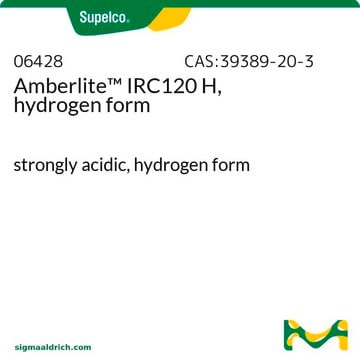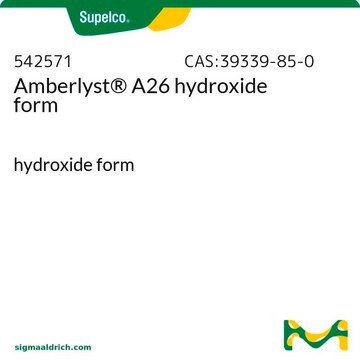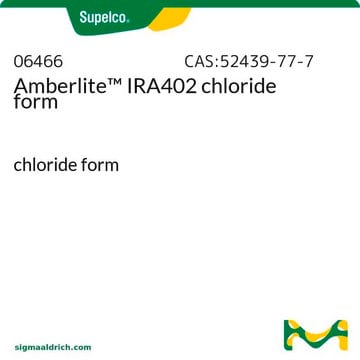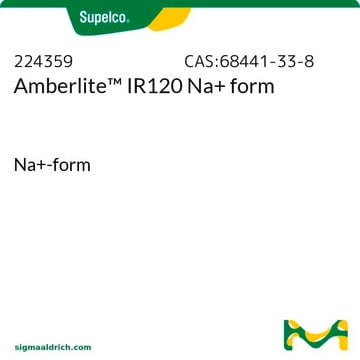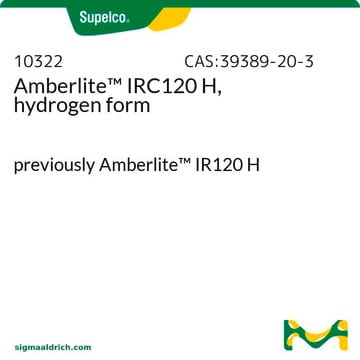Recommended Products
form
beads
crosslinking
8 % cross-linked
packaging
bucket of 500 g
parameter
121 °C max. temp.
moisture
49-55%
technique(s)
LPLC: suitable
matrix
styrene-divinylbenzene (gel)
matrix active group
SCX
particle size
600-700 μm
operating pH
0-14
capacity
1.9 meq/mL by wetted bed volume
separation technique
cation exchange
General description
Amberlite™ IRN77 is a strong acid cation exchange resin.
As Nuclear Grade, a minimum of 99% of the available exchange sites are in the hydrogen form.
Strongly acidic cation exchange resin for water treatment, RAD waste treatment, decontamination.
Application
Amberlite™ IRN77 was used as cation exchanger to determine the sorption activity towards Cs(I) and Sr(II) using isothermal titration calorimetry and solution-depletion methods.
Legal Information
Amberlite is a trademark of DuPont de Nemours, Inc.
signalword
Warning
hcodes
pcodes
Hazard Classifications
Eye Irrit. 2
Storage Class
10 - Combustible liquids
wgk_germany
WGK 3
flash_point_f
Not applicable
flash_point_c
Not applicable
ppe
Eyeshields, Gloves, type ABEK (EN14387) respirator filter
Choose from one of the most recent versions:
Already Own This Product?
Find documentation for the products that you have recently purchased in the Document Library.
Kyeong-Ho Yeon et al.
Water research, 38(7), 1911-1921 (2004-03-18)
This study investigated the production of high-purity water in the primary coolant of a nuclear power plant via the continuous electrodeionization (CEDI) process, using ion exchange resins as ion-conducting media between ion exchange membranes. The effectiveness of this method was
Benedicte Prelot et al.
Environmental science and pollution research international, 21(15), 9334-9343 (2014-04-15)
Sorption performance of cation-exchange resins Amberlite® IRN77 and Amberlite™ IRN9652 toward Cs(I) and Sr(II) has been tested in single-component aqueous solutions and simulated waste effluents containing other monovalent (Effluent 1) or divalent (Effluent 2) metal cations, as well as nitrate
Cristina Morales Torres et al.
Nature communications, 11(1), 1792-1792 (2020-04-15)
Continuous cancer growth is driven by subsets of self-renewing malignant cells. Targeting of uncontrolled self-renewal through inhibition of stem cell-related signaling pathways has proven challenging. Here, we show that cancer cells can be selectively deprived of self-renewal ability by interfering
Our team of scientists has experience in all areas of research including Life Science, Material Science, Chemical Synthesis, Chromatography, Analytical and many others.
Contact Technical Service
